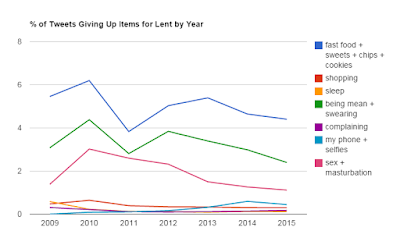 |
| Giving things up for the Kingdom? |
Such suggestions among Christians border on the ridiculous. We should remember Paul’s admonitions, such as:
Let me ask you only this: Did you receive the Spirit by works of the law or by hearing with faith? Are you so foolish? Having begun by the Spirit, are you now being perfected by the flesh? Did you suffer so many things in vain—if indeed it was in vain? Does he who supplies the Spirit to you and works miracles among you do so by works of the law, or by hearing with faith—just as Abraham “believed God, and it was counted to him as righteousness”? Galatians 3:2-6)
And:
If with Christ you died to the elemental spirits of the world, why, as if you were still alive in the world, do you submit to regulations— “Do not handle, Do not taste, Do not touch” (referring to things that all perish as they are used)—according to human precepts and teachings? These have indeed an appearance of wisdom in promoting self-made religion and asceticism and severity to the body, but they are of no value in stopping the indulgence of the flesh (Colossians 2:20-23).
Instead, Ash Wednesday is a 10th century invention, and not one “Lenten” practice can be traced to the New Testament. The list here, compiled by Yves Congar in his “The Meaning of Tradition”, places many of these rituals well into the fourth century and later:
— The Lenten fast (Irenaeus, Jerome, Leo)
— Certain baptismal rites (Tertullian, Origen, Basil, Jerome, Augustine)
— Certain Eucharistic rites (Origen, Cyprian, Basil)
— Infant baptism (Origen, Augustine)
— Prayer facing the East (Origen, Basil)
— Validity of baptism by heretics (pope Stephen, Augustine)
— Certain rules for the election and consecration of bishops (Cyprian)
— The sign of the cross (Basil, who lived 329-379)
— Prayer for the dead (note, this is not “prayers to the dead) (John Chrysostom)
— Various liturgical fests and rites (Basil, Augustine)
From Yves Congar, in his “The Meaning of Tradition,” (and derived from his scholarly “Tradition and Traditions” and a textbook for Roman Catholic seminarians), (pg. 37).
Again, while such practices as Lenten fasts and the sign of the cross are still practiced, many of these “apostolic traditions” – really those extending earlier than the 4th century – such as prayer facing east, and Cyprian’s rules for electing and consecrating bishops, actually find themselves in the dustbin of history.
Even those for which there is attestation became exaggerated over time. The “Lenten Fast” mentioned with respect to Irenaeus, above, for example, originally only was “40 hours”:
Closer examination of the ancient sources, however, reveals a more gradual historical development. While fasting before Easter seems to have been ancient and widespread, the length of that fast varied significantly from place to place and across generations. In the latter half of the second century, for instance, Irenaeus of Lyons (in Gaul) and Tertullian (in North Africa) tell us that the preparatory fast lasted one or two days, or forty hours—commemorating what was believed to be the exact duration of Christ’s time in the tomb. By the mid-third century, Dionysius of Alexandria speaks of a fast of up to six days practiced by the devout in his see; and the Byzantine historian Socrates relates that the Christians of Rome at some point kept a fast of three weeks. Only following the Council of Nicea in 325 a.d. did the length of Lent become fixed at forty days, and then only nominally. Accordingly, it was assumed that the forty-day Lent that we encounter almost everywhere by the mid-fourth century must have been the result of a gradual lengthening of the pre-Easter fast by adding days and weeks to the original one- or two-day observance. This lengthening, in turn, was thought necessary to make up for the waning zeal of the post-apostolic church and to provide a longer period of instruction for the increasing numbers of former pagans thronging to the font for Easter baptism. Such remained the standard theory for most of the twentieth century.
We simply should not adopt fourth century practices as if it enables us to repent better than or more sincerely than simply to bow our heads and “with confidence draw near to the throne of grace, that we may receive mercy and find grace to help in time of need.”

John,
ReplyDeleteI see you mention infant baptism and so I am wondering what are some good books that credo baptism was what the sub apostolic and earliest church taught.
Thanks!
Everett Ferguson's "Baptism in the Early Church" (Eerdmans 2009) discusses it.
Deletehttp://theaquilareport.com/ash-wednesday-picking-and-choosing-our-piety/#.VrtKjCZUTpI.facebook
Delete